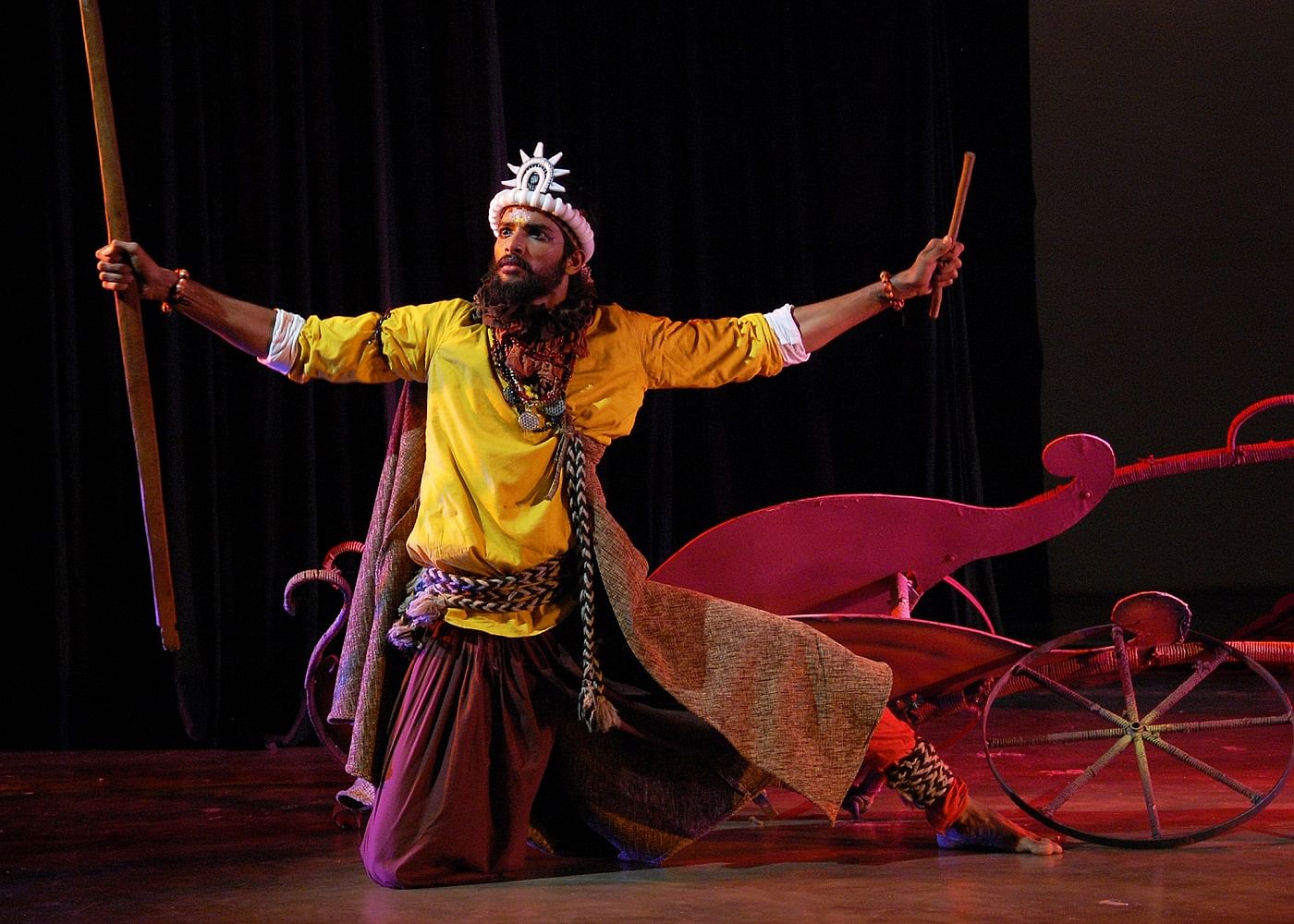
There are stories from the past and the lives of the contemporary, literature of the yesteryears and the audience of today, texts of the classics and the lores of the folk, art-forms that call themselves traditional and theatres that want to be modern. It is as difficult to demarcate one of these from the other to say where one ends and the other begins as it is to say there is a free flow between the binaries.
‘Karnasangatya’, a recent theatre production in Kannada, directed by Ganesh Mandarti, has an intricate embroidery of apparently distinct stories and traditions and makes us see the twines meet. This play is being performed by Ninasam Tirugata, a repertory that travels around Karnataka.
By his teen years, Ganesh, who hails from Mundari, a village near Udupi, was already performing as bhagavata — the lead singer — and maddalegara — the percussionist — in professional Yakshagana troupes. People started recognising him through Mandarti Mela, the Yakshagana troupe he worked with, and started calling him Ganesh Mandarti. The surname has remained with him even after he stopped performing Yakshagana. He was drawn towards theatre when he was a college student at Udupi after he saw a play,
which he realised was very different from Yakshagana and showed him the possibilities of theatre.
Attracted by the form, he joined the Ninasam Theatre Institute in 2009-10, where he saw various kinds of plays, in addition to getting trained under some of the best theatre teachers
and directors of the times. Since then, he has conducted theatre workshops and directed plays in various parts of Karnataka and his plays have been received with great warmth and applause in several theatre festivals in India.
Yakshagana has been an integral part of Ganesh’s work in theatre. When we talk about traditional performing arts creating the tapestry of contemporary theatre production, more often
than not, we talk about the apparent elements of the traditional, like rhythms and dance manoeuvres, being used in a theatre performance.
However, for Ganesh, Yakshagana is more than what can be seen on the surface — it is a way of thinking about the world. He often uses Yakshagana rhythm in his plays but it does not end there. The worldview of Yakshagana or the Bhagavata tradition has influenced his work. This could be seen even when he directed Oedipus in Kannada last year.
In the last ten centuries, Kannada literature has seen many poets who have narrated the life of Karna, alongside the folk traditions who have sung about him in vibrant and distinct
ways. ‘There are folk narratives in Kannada that believe that Mahabharata was created with the sole purpose of telling Karna’s story’, notes Devendra Beleyuru, an agriculturist with a keen interest in folklore.
What makes Ganesh stand apart from various other productions of mythology is the way he blends the stories from the classic and the folk. He also brings together classical literary
Kannada of the tenth to the fifteenth century and the everyday Kannada of the folks. The elements of the classic provide the serious and the tragic whereas the folk provides the fun and frolic of the Karna narrative. Ganesh is conscious of this.
“Folk is not just about the comic”, he says, “but building of a play happens in the spur of the moment. I could have done it differently”. The play narrates the story of Karna from his mysterious birth, learning the art of war from Parashurama, revealing of his true identity, the war and his death interspersed with tales about his readiness to give, Draupadi’s secret love on Karna to name a few from the folklore.
“Being the son of an unmarried mother, I was driven to Karna,” Ganesh says, “though, I never faced the identity crisis that he did.’ The play depicts Karna as a great warrior, a gentle human being and a friend unmatched.
There have been various stories in Sanskrit and other Indian languages that consider Karna to be cunning, over-ambitious and jealous. None of those can be seen in this play and Ganesh holds his clarity: ‘Today’s media, both on television and internet, speaks easily about the vices of a person; this is the right time we regain our capacity to talk about the virtues. Theatre is not a tool of transmitting truth, but it lives through aesthetic sensibilities’.
The play ends with the chronicle of earlier births of Karna and portrays his death as attaining liberation from the cycle of birth and death, which according to some audiences neglect the
sociological reasons for his sufferings.
The play, however, delineates various aspects of his grief and humiliation and adds the dimension of liberation to it. “The account of Karna’s earlier lives or him attaining liberation is there in earlier poets,’ says Ganesh, ‘it is neither my creation, nor my addition’.
(The writer is a theatre critic)